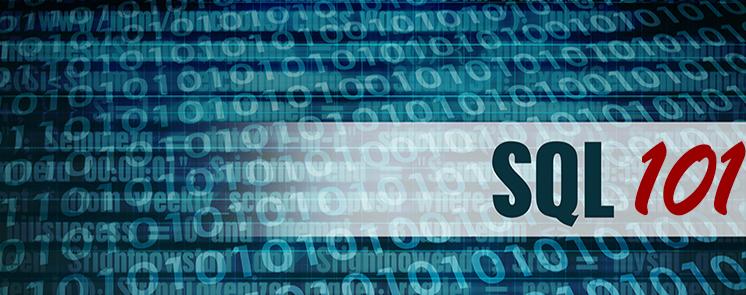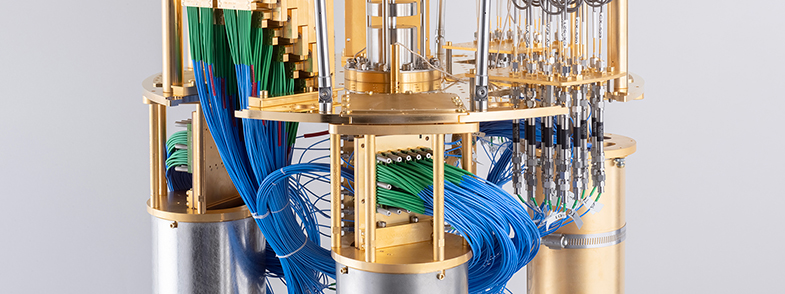March 15, 2019

March 15, 2019 | Volume 14 Issue 33
- LEAD ARTICLE: SQL 101: Embedding SQL in RPG Code, Part 2
- FEATURED ARTICLE: How Bad Are Certain IBM i Security Settings? Not So Bad, Pretty Bad, or Really Bad?
- FEATURED ARTICLE: How to Code Selective Prompting in a CL Program
- NEWS HIGHLIGHT: LaserVault Introduces ViTL: Eliminates Costly Manual Processes From IBM i Backups
- WHITE PAPER: 2019 State of IBM i Modernization
- MC VIDEO SHOWCASE: Design an Invoice in 10 Minutes
- EVENT: From Barcode Label to RFID Liberating

SQL 101: Embedding SQL in RPG Code, Part 2
Did you know you can use host variables nearly everywhere in an embedded SQL statement? Keep reading to find out more!
By Rafael Victória-Pereira
Last time around, I showed you how to embed SQL code in both fixed- and free-format RPG code. I also demonstrated the functionality provided by host variables, which allow SQL and RPG to exchange information in a simple and easy-to-implement way. Let’s continue that discussion.
IBM Quantum Computer Demonstrates Next Step Towards Moving Beyond Classical Supercomputing

How Bad Are Certain IBM i Security Settings? Not So Bad, Pretty Bad, or Really Bad?
I realize that I’ve spent a lot of time explaining best practices and what my recommendations are, but I don’t often explain why some settings aren’t the best.
By Carol Woodbury
Some of my favorite magazines will describe a popular action and then explain why that practice is not so bad, pretty bad, or really bad. Using this method, I’m going to describe how bad certain security settings are.
Why Migrate When You Can Modernize?
Explore the main considerations you should be aware of before embarking on a (migration or modernization) project. Take a deeper dive into business motivations and factors that could potentially influence your decision to migrate or modernize your existing IT platform and its risks.

More than ever, there is a demand for IT to deliver innovation.
Your IBM i has been an essential part of your business operations for years. However, your organization may struggle to maintain the current system and implement new projects.
The thousands of customers we've worked with and surveyed state that expectations regarding the digital footprint and vision of the companyare not aligned with the current IT environment.
Get your copy of this important guide today!

Node Webinar Series Pt. 1: The World of Node.js on IBM i
Have you been wondering about Node.js? Our free Node.js Webinar Series takes you from total beginner to creating a fully-functional IBM i Node.js business application.
Part 1 will teach you what Node.js is, why it's a great option for IBM i shops, and how to take advantage of the ecosystem surrounding Node.
In addition to background information, our Director of Product Development Scott Klement will demonstrate applications that take advantage of the Node Package Manager (npm).
watch now!

Low Code: A Digital Transformation of Supply Chain and Logistics
Learn how businesses leverage Low-Code to continue to deliver value through digital transformation. Discover how the power of Low-Code is helping many businesses evolve their supply chain, increase ROI, and achieve more tangible results.
Watch this webcast now.

Easiest Way to Save Money? Stop Printing IBM i Reports
The thought of printing, distributing, and storing iSeries reports manually may reduce you to tears. Paper and labor costs associated with report generation can spiral out of control. Mountains of paper threaten to swamp your files. Robot automates report bursting, distribution, bundling, and archiving, and offers secure, selective online report viewing.
Manage your reports with the Robot Report Management Solution.
Rerun another report? Never again. Try the Robot Report Management Solution FREE for 30 days.

Comply in 5! Well, actually UNDER 5 minutes!!
TRY the one package that solves all your document design and printing challenges on all your platforms.
Produce bar code labels, electronic forms, ad hoc reports, and RFID tags – without programming! MarkMagic is the only document design and print solution that combines report writing, WYSIWYG label and forms design, and conditional printing in one integrated product.


How to Code Selective Prompting in a CL Program
Ted Holt explains how to add command prompting code that pauses a CL procedure and waits for the user to enter parameter values
By Ted Holt
Editor’s note: This article is excerpted from chapter 13 of Complete CL: Sixth Edition, by Ted Holt.
Selective prompting is one example of an advanced technique. With selective prompting, you activate the prompter for a command from within a CL procedure. In other words, a CL procedure can contain an instruction that causes the procedure to stop, display the command prompter for a particular command, and wait for the user to enter parameter values and press the Enter key. When the user presses Enter, the CL procedure continues to execute.
























 IT managers hoping to find new IBM i talent are discovering that the pool of experienced RPG programmers and operators or administrators with intimate knowledge of the operating system and the applications that run on it is small. This begs the question: How will you manage the platform that supports such a big part of your business? This guide offers strategies and software suggestions to help you plan IT staffing and resources and smooth the transition after your AS/400 talent retires. Read on to learn:
IT managers hoping to find new IBM i talent are discovering that the pool of experienced RPG programmers and operators or administrators with intimate knowledge of the operating system and the applications that run on it is small. This begs the question: How will you manage the platform that supports such a big part of your business? This guide offers strategies and software suggestions to help you plan IT staffing and resources and smooth the transition after your AS/400 talent retires. Read on to learn: Business users want new applications now. Market and regulatory pressures require faster application updates and delivery into production. Your IBM i developers may be approaching retirement, and you see no sure way to fill their positions with experienced developers. In addition, you may be caught between maintaining your existing applications and the uncertainty of moving to something new.
Business users want new applications now. Market and regulatory pressures require faster application updates and delivery into production. Your IBM i developers may be approaching retirement, and you see no sure way to fill their positions with experienced developers. In addition, you may be caught between maintaining your existing applications and the uncertainty of moving to something new.